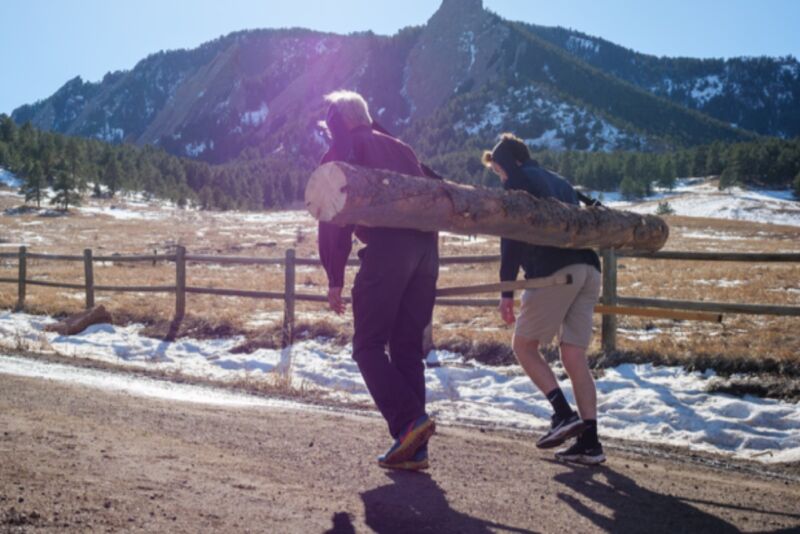These scientists lugged logs on their heads to resolve Chaco Canyon mystery

Enlarge / Rodger Kram, left, and James Wilson carry a log with tumplines with the Boulder Foothills in the background. (credit: Patrick Campbell/CU Boulder)
The so-called "great houses" of Chaco Canyon in New Mexico may have taken decades or longer to construct. Most large complexes had four or five stories and averaged over 200 rooms, with the largest boasting as many as 700 rooms. The complexes also featured large circular ceremonial areas called kivas. To construct these great houses, archaeologists have estimated that the Chacoans would have needed wood from some 200,000 trees, and those 16-foot-long wooden beams must have been transported from mountain ranges as far as 70 miles (110 km) away.
Many scientists have hypothesized about how the Chacoans might have accomplished this feat. The latest theory is that the Chacoans may have used simple devices called tumplines, still favored by sherpas in Nepal, according to a new paper published in the Journal of Archaeological Science: Reports. To test that hypothesis, co-authors Rodger Kram and James Wilson spent the summer of 2020 training until they could haul a heavy log some 15 miles using tumplines. "Some people baked sourdough bread during COVID," said Kram, an emeritus professor of integrative physiology at the University of Colorado at Boulder. "Instead, we carried sand and heavy logs around using our heads."
There are no preserved timber scrape marks near the site, and the people of Chaco Canyon didn't have draft animals or even wheels, according to Kram and his co-authors. So the logs must have been carried by people, most likely along the wide roadways that linked this world. A 1925 publication featured a photograph depicting eight young men from Zuni Pueblo carrying a log: four on each side holding thin cross-poles at hip height, with the log laid on top. That photograph influenced many of the proposed mechanisms for transporting the logs. However, Kram et al. pointed out that there's no clear evidence that the residents of Zuni Pueblo share cultural connections with the people who once inhabited Chaco Canyon. "We feel that it is dubious to infer Chaco era timber transportation methods from a staged 20th century image," they wrote.